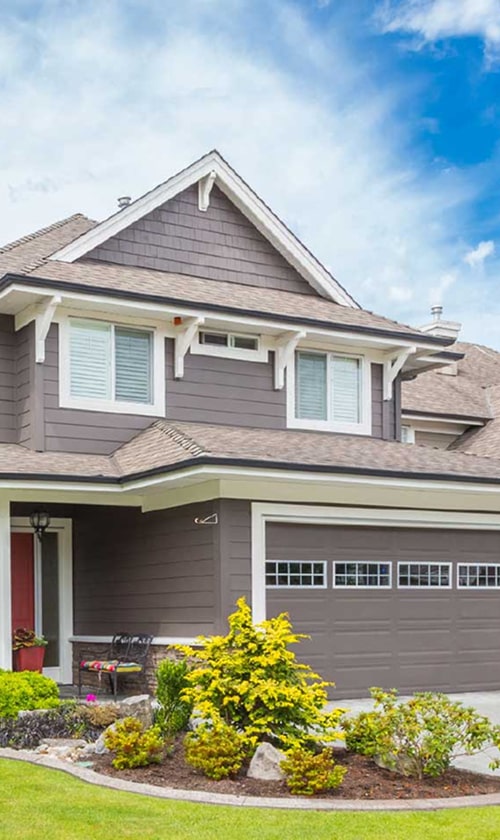Fundamentals of HVAC Ventilation

We understand that an effective HVAC system is pivotal for maintaining indoor air quality and comfort. In this section, we will explore the core aspects of HVAC ventilation that ensure a healthy and comfortable indoor environment.
Ventilation and Indoor Air Quality
Ventilation is crucial as it governs the flow of outdoor air into a space, replacing stale and contaminated indoor air with fresh air. We adhere to two main types of ventilation: natural and mechanical. Natural ventilation occurs through open windows and passive air flow, but is often insufficient alone. Mechanical ventilation systems, embedded within HVAC systems, actively manage air exchange, significantly improving indoor air quality by removing pollutants and regulating the level of CO2. This is essential for both health and cognitive function.
- Key components of mechanical ventilation in HVAC:
- Intake vents for fresh air
- Exhaust vents to expel indoor air
- Air filters to remove contaminants
- Ducts to channel air throughout the building
Principles of Heating and Cooling
The ability to control the indoor temperature is one of the most elemental functions of an HVAC system. By employing principles such as conduction, convection, and radiation, HVAC systems distribute heated or cooled air, ensuring our comfort. Heating and cooling systems utilize energy to adjust the temperature of indoor air, often through a cycle involving a refrigerant.
- Heating and cooling methods within HVAC:
- Furnaces for heat generation
- Air conditioners for cooling
- Heat pumps for both heating and cooling, offering energy efficiency
Humidity and Temperature Control
Effective HVAC ventilation must consider both humidity levels and temperature for optimal comfort. We manage humidity through devices like dehumidifiers that remove excess moisture from the air, and humidifiers that add moisture when the air is too dry. Maintaining a balance between humidity and temperature is necessary to avoid discomfort, structural damage, and growth of molds.
- Ideal indoor conditions for comfort and health:
- Temperature: generally between 68°F to 78°F
- Humidity: generally between 30% to 50%
By carefully controlling these factors, our HVAC systems create a stable and comfortable indoor environment whilst optimizing for energy efficiency.
Design and Components of HVAC Systems

In this section, we focus on the critical elements that constitute an HVAC system, emphasizing its design and the various components that ensure it operates efficiently and effectively.
Importance of Proper Design
The design of an HVAC system directly impacts its efficiency, performance, and longevity. We ensure that our design optimizes the flow of air throughout the building and achieves a balance between energy consumption and comfort. Attention to detail during the design phase is paramount to prevent issues such as inadequate heating or cooling, poor air quality, and excessive noise.
Key HVAC Components
Thermostats: The brain of the HVAC system; they regulate temperature and maintain comfort.
Furnaces: Generate warm air, crucial for colder climates.
Heat Pumps: Transfer heat from one place to another, useful for both heating and cooling.
Air Filters: Essential for capturing contaminants and ensuring clean air distribution.
Ductwork: A network of tubes that channels conditioned air throughout a building.
Vents: Openings that allow the distribution of air into various rooms.
- Filters and Filtration: High-quality filters and advanced filtration systems are key for removing pollutants and maintaining air quality.
- Split Systems: Composed of an exterior unit and an interior unit, often preferred for their efficiency.
- Ductless Mini-Split Systems: Ideal for spaces where traditional ductwork is not feasible.
Each of these components must be carefully selected and installed to create a cohesive and high-performing HVAC system.
Ventilation System Types
Ventilation is critical in maintaining indoor air quality. The main types of ventilation systems include:
- Natural Ventilation: Relies on pressure differences and wind to move fresh air through the building.
- Mechanical Ventilation: Uses fans and duct systems to control indoor air quality.
- Balanced Ventilation: Combines both supply and exhaust, balancing the air that is brought in and out of the building.
By integrating these systems into our HVAC design, we achieve proper ventilation, reducing pollutants, and ensuring a healthy indoor environment.
Health, Safety, and Environmental Impact

Effective ventilation is essential in HVAC systems to ensure the air within indoor environments remains fresh, free of pollutants, and is comfortable for occupants. Proper ventilation impacts health, safety, and environmental sustainability. It controls indoor air quality by removing contaminants, helps to meet established safety standards, and contributes to the environmental sustainability of operations by reducing energy costs.
Air Quality and Health
We must acknowledge the critical role that air quality plays in maintaining health. An effective ventilation system removes harmful pollutants, allergens, and mold from indoor air, mitigating issues related to allergies and respiratory health. It is our job to keep the indoor environment safe and comfortable.
- Pollutants: These include volatile organic compounds (VOCs), tobacco smoke, and particulate matter. Proper ventilation dilutes and removes these.
- Allergens and Mold: We minimize these by maintaining appropriate humidity levels and ensuring continuous air exchange.
Safety and Ventilation Standards
Ensuring safety through ventilation standards is a high-priority task. Well-designed HVAC systems prevent the build-up of harmful gases such as carbon monoxide and control the dispersion of contaminants, including oil mists, which pose fire and health hazards.
- Safety Standards: We adhere to codes such as ASHRAE standards to maintain safe ventilation systems.
- Contaminant Control: By regularly updating and maintaining HVAC systems, we manage the risks associated with airborne contaminants.
HVAC and Environmental Sustainability
Our commitment to environmental sustainability is reflected in the design and operation of HVAC systems. By optimizing ventilation, we not only reduce operating and energy costs but also minimize the environmental impact.
- Sustainability: We implement energy-efficient ventilation strategies to conserve resources and reduce carbon footprint.
- Operating Costs: Efficient systems mean we lower both energy consumption and long-term financial outlays.
System Performance and Maintenance

In discussing the vitality of ventilation systems within HVAC units, we specifically focus on ensuring maximal efficiency and performance through proper maintenance.
Maximizing Energy Efficiency
To keep energy consumption at bay while maintaining optimal performance, it’s critical to ensure that all components of the HVAC system are functioning efficiently. This includes fans and ducts which facilitate proper air circulation. Energy-efficient models with high SEER (Seasonal Energy Efficiency Ratio) ratings reduce energy loss and operating costs, while advancing the well-being of occupants by providing a steady circulation of air. Heat recovery ventilators can increase energy efficiency by reclaiming energy from exhaust air.
Routine Maintenance and Repairs
We acknowledge the importance of regular maintenance to prevent the build-up of pollen, mildew, and debris, which impede air quality and system efficiency. Our maintenance protocol includes:
- Inspection and Cleaning: Ducts, fans, and filters are examined and cleaned to promote clean air circulation.
- Filter Replacement: Replacing filters regularly ensures that air filtering remains effective.
- Repairs: Prompt repair of any detected issues minimizes further damage and costs. A well-maintained system diminishes the frequency and severity of repairs.
Advanced Controls and Thermostats
Implementing programmable thermostats in an HVAC system provides us with better control over the ventilation rate and temperature, leading to a balance between comfort and energy use. Advanced controls permit the customization of settings to match occupancy patterns, further reducing energy consumption without compromising air quality. These smart systems enhance the overall performance of the HVAC system, making it responsive to the specific needs of the environment.
Ventilation in Different Settings
Ventilation systems are integral to maintaining indoor air quality and providing comfort across various settings. We will explore the specifics of ventilation in both commercial and residential environments, detailing how these systems affect productivity and occupant health and safety.
Commercial Ventilation Systems
In commercial settings, proper ventilation directly contributes to occupant productivity and well-being. Commercial HVAC systems often include complex systems with a combination of central air conditioning, heat pumps, and robust controls. These systems must be designed to handle larger spaces and a higher volume of air flow. Ducts are usually larger and more complex, tailored for specific building requirements. For instance, in an office complex, a central system with variable air volume controls may be used to regulate temperatures in different zones, depending on occupancy and the time of day.
Key Commercial Features:
- Central Air Conditioning: Efficiently cools large spaces.
- Heat Pumps: Provide heating and cooling, reducing the need for separate systems.
- Controls: Advanced systems to adjust settings for optimal occupant comfort and energy efficiency.
Residential HVAC Solutions
Residential HVAC solutions prioritize occupant comfort and health within the living space. Central air conditioning and insulated ductwork are commonly installed in homes to provide uniform temperature control. For areas where ducts are not feasible, ductless mini-split systems offer a flexible alternative, with individual units in each room that can be controlled independently for personalized comfort.
Residential Features at a Glance:
- Ductless Mini-Split Systems: Provide targeted heating/cooling without the need for extensive ductwork.
- Central Air Conditioning: A staple for overall climate control in homes.
- Air Quality: Filters and ventilation technologies ensure fresh air circulation and removal of contaminants.
In both commercial and residential settings, proper ventilation is essential for HVAC systems to deliver clean air, maintain comfort levels, and ensure the hvac industry maintains its commitment to both energy efficiency and occupant health and safety.




